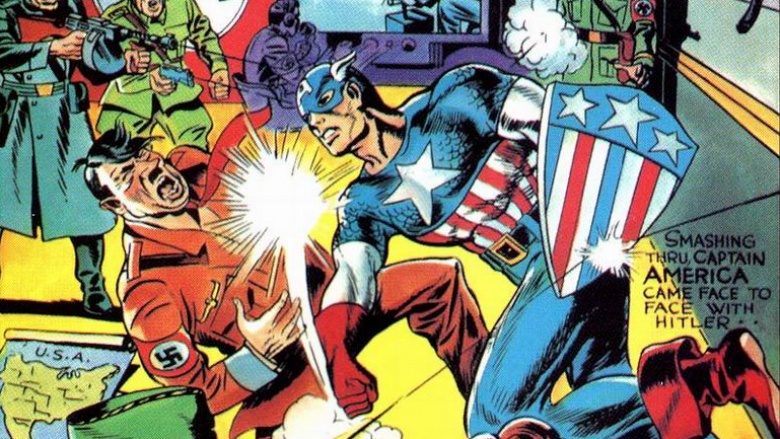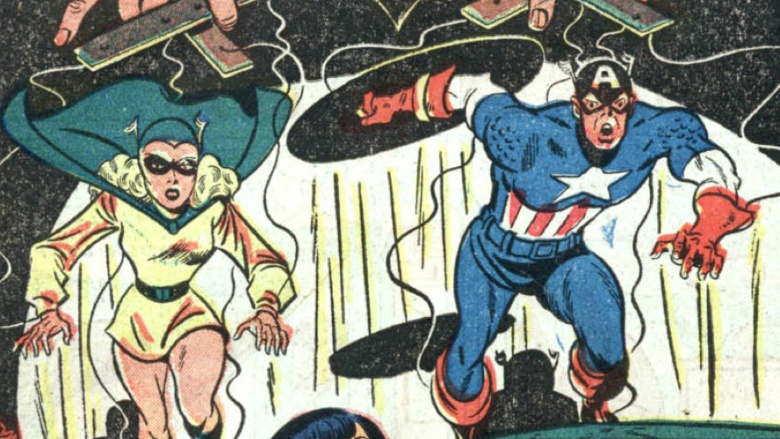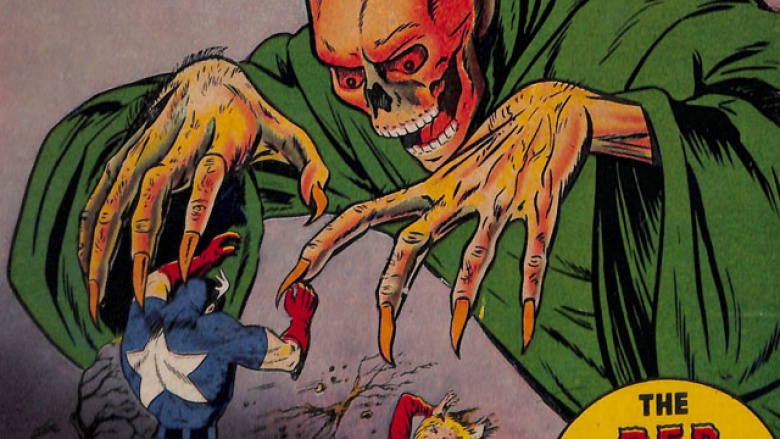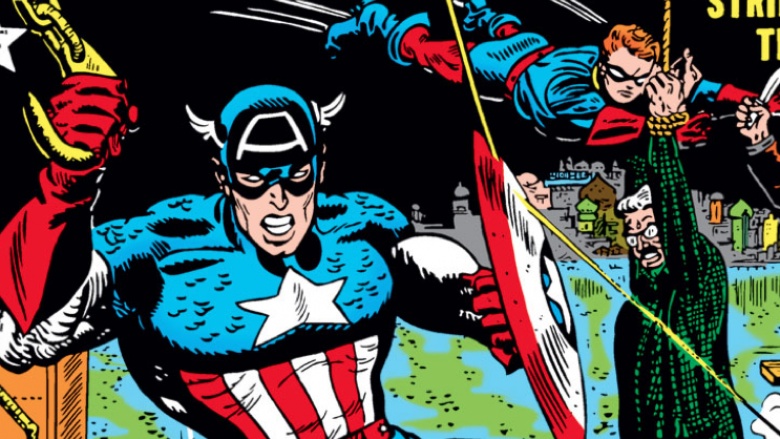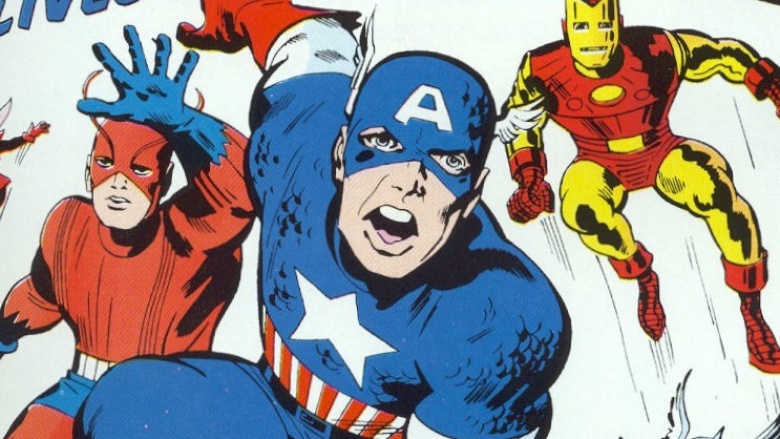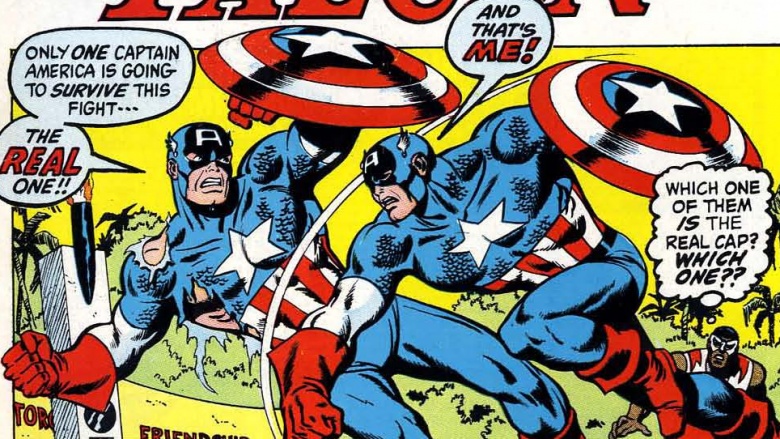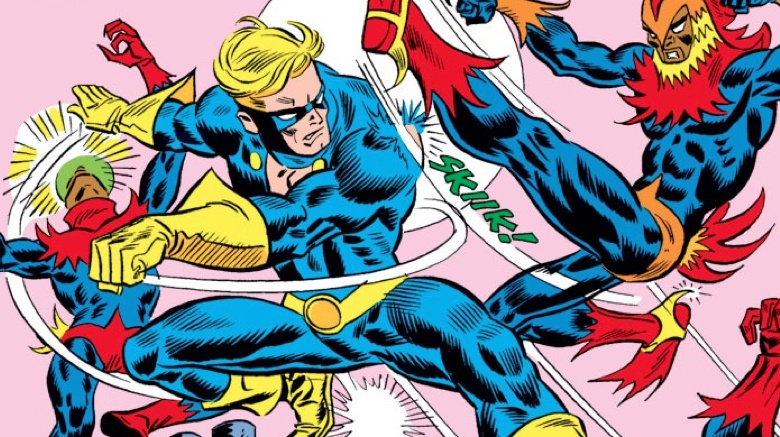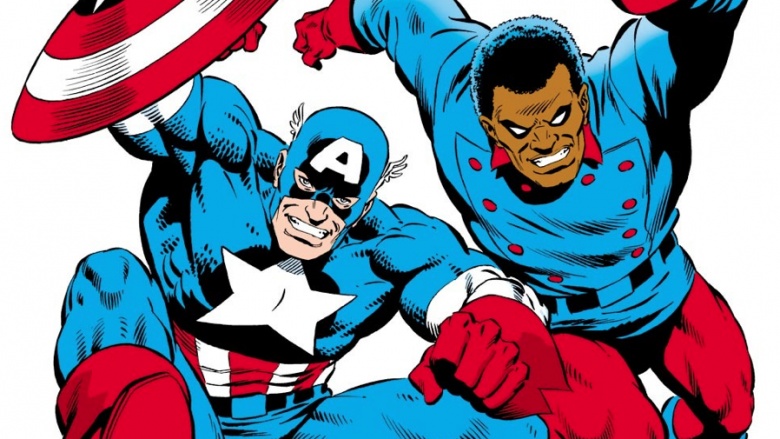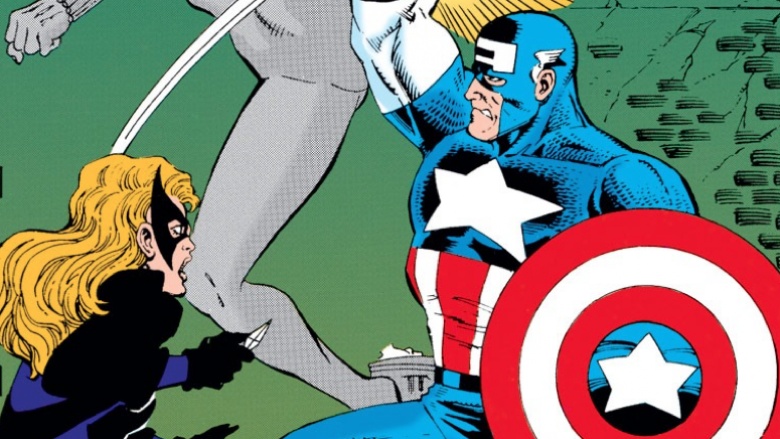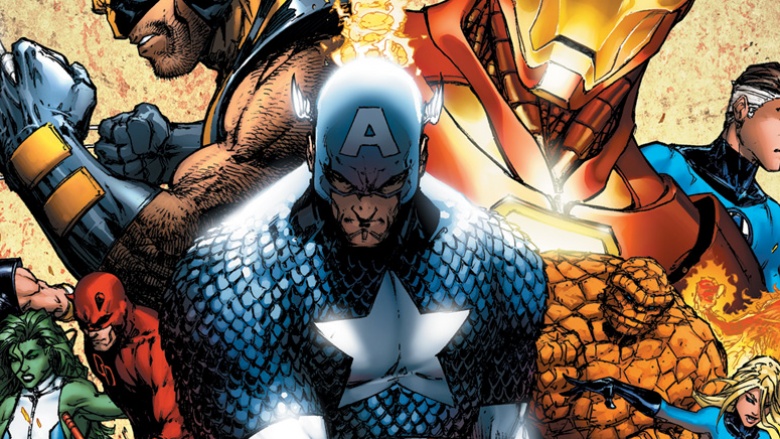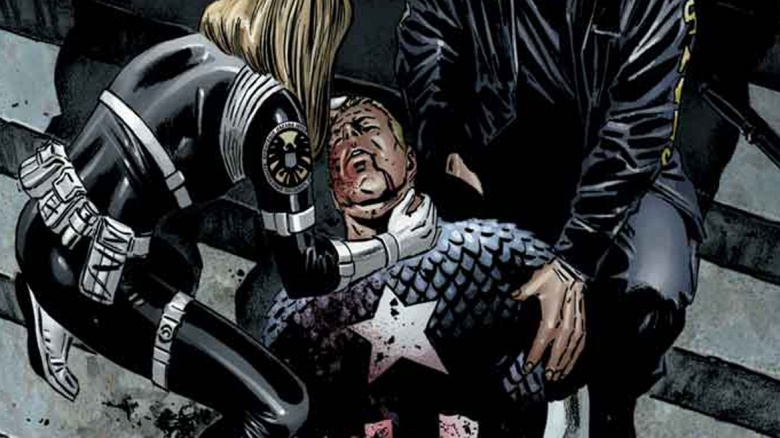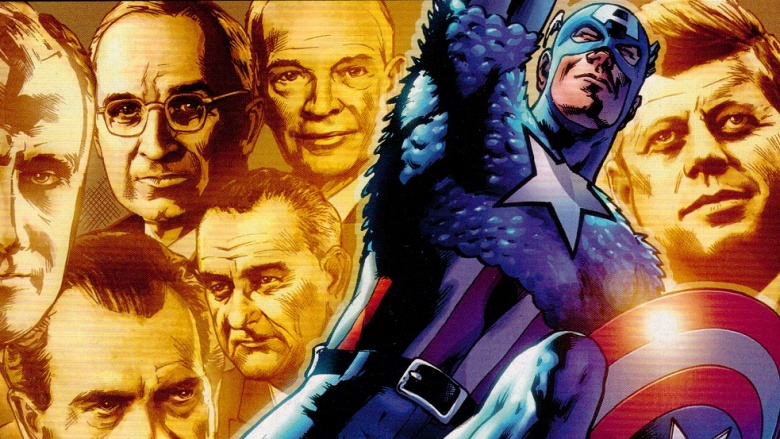The Dark History Of Captain America
Marvel's Captain America is often seen as something of a Nazi-punching boy scout, but his long life hasn't been all amber waves of grain. In fact, Steve Rogers has seen far more than his fair share of misery and torment, but his positive perseverance and leadership as Cap has gotten him—and us—through some pretty rough stuff. Here's a glimpse into Captain America's dark history.
1940 - First Appearance
Captain America was created for Timely Comics, a publisher that would eventually collapse and be absorbed into Marvel. In Captain America Comics #1, Steve Rogers is a scrawny comic book artist who wants to fight in World War II, but due to his pathetic physical condition, he's unable to serve—until he allows himself to be subjected to medical experiments that make him a super soldier. The first issue, which had Cap punching Hitler in the face on the cover, sold over 1 million copies—but even during a time of plentiful war propaganda, it proved to be highly controversial. Captain America co-creator Joe Simon later revealed that he and partner Jack Kirby received a number of threats from Nazi sympathizers and non-interventionists who wanted to keep America out of the war, but were promised personal protection from New York City Mayor Fiorello LaGuardia.
1947 - Bucky Is Shot
Steve Rogers and Bucky Barnes were missing in action and presumed dead after World War II, but the Captain America mantle was carried on by others who took the Cap and Bucky names while fighting crime. By 1947, readers had seen William Nasland and Jeff Mace battle for truth and justice as Cap, both of them fighting alongside the second Bucky, a man named Fred Davis. But Bucky No. 2 took an unplanned vacation after being severely wounded by a shot through the guts from a perfume-obsessed villainess called Lavender and was replaced by Betsy Ross, a.k.a. Golden Girl, who had the added advantage of being able to make out with Cap between missions. The duo eventually retired to upstate New York after giving up their superhero alter egos in 1950.
1950 - Sent To Hell and Cancelled
By 1950, World War II was long over and interest in comics had waned significantly. Captain America stopped appearing in his own title with issue #74, which culminated in Cap battling Red Skull in Hell. Cap knocked Skull into the fiery depths (despite Skull wielding Death's own scythe), and the total insanity of Golden Age Cap came to an end—kind of.
1954 - Half-Revival
After a few years of silence, Captain America was brought back for a few more issues, but he seemed a bit strange. During this incarnation, Cap's main target was communism—and he was so inflamed with anti-Red sentiment that he had no problem burning Soviets and their sympathizers alive. Much later on, this version of Captain America was retconned, assuring readers that Steve Rogers hadn't been under the mask after all.
1964 - Full Revival
Marvel's The Avengers launched in 1963, but it wasn't until issue #4 that Captain America joined the team in place of the Hulk, reawakening as a man out of time after being stuck in a block of ice for almost 20 years. No longer the WWII-driven patriot he'd been in the '40s, the thawed Steve Rogers was a man whose values and perceptions were a couple of decades behind the times, and he struggled to understand the swinging, more politically correct '60s. In Captain America #109, Rogers retold his origin story, but this time, he confessed to murdering the spy who disrupted the Super Soldier program. The times were getting darker.
1968 - The Truth Revealed
In Captain America #153, an extremely racist version of Captain America and Bucky appeared and started beating up random people in Harlem. After a few issues, evil Cap launched into a monologue about how he was actually the Commie-hunting Captain America active in the 1950s, aided by a mind-warping version of the Super Soldier serum that he'd discovered, which explained the fake Cap's strange behavior as well as his weird 1950s antics. Of course, the real Cap defeated his old-timey doppelganger, but their encounter caused him to question the evolution of his own American ideals.
1974 - Nomad
Issue #175 of Captain America resolved a story arc in which a shadow government of top officials operating in Washington collapsed under Cap's mighty shield, culminating in a high-ranking politician's suicide right in front of Cap himself. Our hero's faith in the system completely disintegrated, and he decided to leave heroism for good—but his vacation only lasted for a few issues before Hawkeye, masquerading as the Golden Archer, baited him into coming out of retirement. Instead of continuing as Captain America, however, he decided to change his name to Nomad—reflecting America's fading faith in its own government after Watergate.
1987 - Super-Patriot
Cap only stuck with his Nomad identity for a few issues, but turbulence struck again in 1987, when the U.S. government claimed ownership of his costume, the Super Soldier serum in his blood, and all of his training. Refusing to abide by the new terms and conditions of his tenure, Rogers stepped down as Captain America and was replaced by John Walker, formerly Super-Patriot. Walker, the ringleader of a group of violent anti-Arab racists called the Buckies, all of whom wore Captain America masks, later went on to punch a man to death.
1990: On Meth
During the "Streets of Poison" story arc, Cap was caught in an explosion at a meth warehouse. Because of his unique blood chemistry, the deadly drug bonded with him in a way he couldn't shake, and he basically became a giant jerk who always felt great. After eventually realizing the reason for his altered behavior, he had his whole system flushed out, Super Soldier serum and all. While all this was going on, Kingpin and Red Skull stripped down to their undies and had a tussle over who had the right to run drugs in New York. Kingpin sat on Red Skull and won—and Cap, of course, got his serum back.
2006: Civil War
After some dumb superhero kids triggered a mutant to explode for a reality TV show, killing 600 people and a school full of kids, the government ramped up its efforts to register every superpowered citizen of America. Of course, this was a privacy violation for all involved, especially those with families and vengeful supervillains. Captain America believed that personal freedoms needed to be protected and went into hiding, while Iron Man and other registered heroes hunted down anyone who broke the new laws.
2007: Murdered
Civil War culminated in the arrest of Captain America, who just wanted to end the destruction. While being led up the courtroom steps for his trial, he was assassinated by Crossbones, a longtime ally of the Red Skull, and a mysterious second shooter—who turns out to be his own hypnotized girlfriend and courtroom escort, Sharon Carter. Former sidekick Bucky Barnes, who had his own set of problems after enduring decades brainwashed as the villain Winter Soldier, took over the role of Captain America in Rogers' absence.
2009: Time Traveller
Rogers wasn't dead for real. Instead, a sci-fi bullet sent him bouncing through time, alternate realities, and the Red Skull's consciousness, all while the Skull controlled Rogers' body in the real world. After finding the Skull in a Nazi-controlled version of New York, Cap nearly strangled him to death before they were both returned to the real world and the Red Skull was (apparently) defeated for good. Having seen Bucky die in one possible future timeline, Steve decided to let him continue on as Captain America for awhile—although he did eventually take the name back again.

